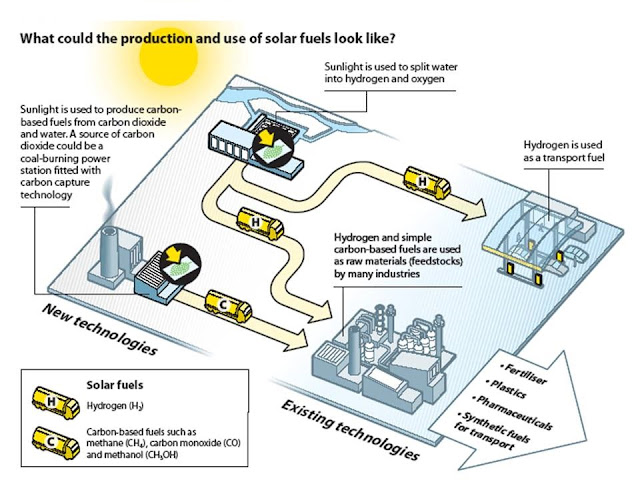Human activity is overloading our atmosphere with carbon dioxide and other global warming emissions. These gases act like a blanket, trapping heat. The result is a web of significant and harmful impacts, from stronger, more frequent storms, to drought, sea level rise, and extinction. Most of global warming emissions come from our electricity sector. Most of those emissions come from fossil fuels like coal and natural gas.
- Sulfur dioxide (SO2), which cause acid rain, comes from electricity generation.
- Nitrogen oxides (NOx), which react with sunlight to create ground level ozone and smog, come from electricity generation.
- Ozone (O3) occurs naturally in the upper atmosphere where it is beneficial.
- Particulate matter is a type of air pollution more commonly referred to as soot.
- Carbon dioxide (CO2) is a greenhouse gas that contributes to global climate change.
- Mercury is a highly toxic metal that is released from coal-fired power plants.
In contrast, most renewable energy sources produce little to no global warming emissions [1].
Renewable energy, often referred to as clean energy, comes from natural sources or processes that are constantly replenished. For example, sunlight or wind keep shining and blowing, even if their availability depends on time and weather [2].
Environmental and economic benefits of using renewable energy include: Generating energy that produces no greenhouse gas emissions from fossil fuels and reduces some types of air pollution. Diversifying energy supply and reducing dependence on imported fuels.
Figure 1 This proposed that renewable energy sources protect environment issues [3].
United States Environmental Protection Agency (EPA) recommends that local governments can dramatically reduce their carbon footprint by purchasing or directly generating electricity from following clean, renewable sources [4].
The most common renewable power technologies include:
- (photovoltaic, solar thermal)
- Wind
- Biogas (e.g., landfill gas/wastewater treatment digester gas)
- Geothermal
- Biomass
- Low-impact hydroelectricity
- Emerging technologies - wave and tidal power
The International Energy Agency (IAE) estimate that total global use of renewable energy will rise by about 1% in 2020. Despite supply chain disruptions that have paused or delayed activity in several key regions, the expansion of solar, wind and hydro power is expected to help renewable electricity generation to rise by nearly 5% in 2020. The IAE mentioned that renewable energy has so far been the energy source most resilient to Covid‑19 lockdown measures. Renewable electricity has been largely unaffected while demand has fallen for other uses of renewable energy [5].
The chemical sciences have a critical role to play in developing energy solutions that will support society’s move from an economy based on fossil fuels to a more sustainable energy mix.
Scientists around the world are working towards the goal of developing technologies to harness energy from the sun to produce fuels for transport, industry and electricity generation. Fuels produced using solar energy would transform our energy options in the future by providing an alternative to fossil fuels. The United States, the Netherlands and South Korea have seen recent investment in dedicated programmes for solar fuels research and innovation, and there are also renewable energy research centres in China and Japan [6].
The need to take immediate action has been underscored by the International Energy Agency’s World Energy Outlook 2011 which concluded that ‘There are few signs that the urgently needed change in the direction of global energy trends is underway, and that ‘We cannot afford to delay further action to tackle climate change.
Scientists and engineers are needed not only to find more efficient ways of producing, refining and using fossil fuels, but also to develop renewable energy solutions [7].
Figure 2 The schematic picture of future solar fuels station look like [7].
Currently, most fuels for transport, electricity generation and many raw materials for industry (feedstocks) are produced from coal, oil or natural gas. But an alternative route to producing liquid and gaseous fuels could be using technologies that harness sunlight. See Figure 2.
The challenge of moving from laboratory prototype systems to commercial technologies is significant. However, if this new route to producing fuels is achieved on a large scale, it would transform our sustainable energy options by providing alternatives to oil, gas and coal as sources of fuel for transport, industry and electricity generation.
References
[1]. Intergovernmental Panel on Climate Change (IPCC). 2011. IPCC Special Report on Renewable Energy Sources and Climate Change Mitigation. Prepared by Working Group III of the Intergovernmental Panel on Climate Change [O. Edenhofer, R. Pichs-Madruga, Y. Sokona, K. Seyboth, P. Matschoss, S. Kadner, T. Zwickel, P. Eickemeier, G. Hansen, S. Schlömer, C. von Stechow (eds)]. Cambridge University Press, Cambridge, United Kingdom and New York, NY, USA, 1075 pp. (Chapter 9).
[2]. https://www.nrdc.org/stories/renewable-energy-clean-facts#sec-whatis
[3]. source: https://www.reliableenergy.com/
[4]. https://www.epa.gov/statelocalenergy/local-renewable-energy-benefits-and-resources
[5]. https://www.iea.org/reports/global-energy-review-2020/renewables
[6]. Alan J Heeger, Solar Fuels and Artificial Photosynthesis Science and innovation to change our future energy options, January 2012, RSC Advancing Chemical Sciences, www.rsc.org/solar-fuels
[7]. World Energy Outlook 2011, International Energy Agency http://www.iea.org/weo/
Blog Written By
Dr. A. S. GANESHRAJA
National College
Thiruchirappalli, Tamilnadu, India



Comments
Post a Comment